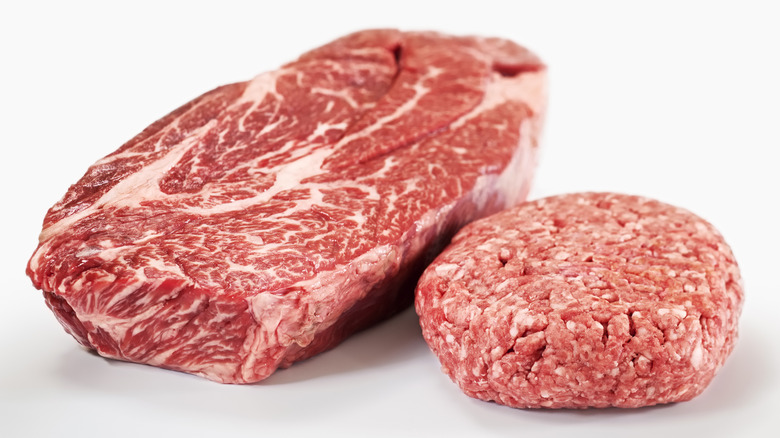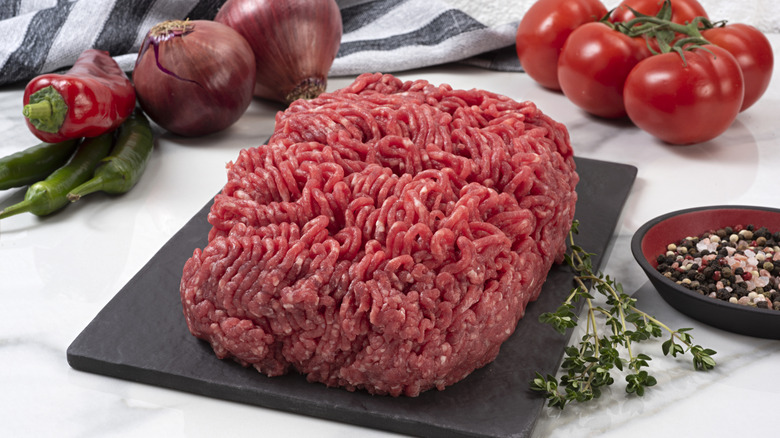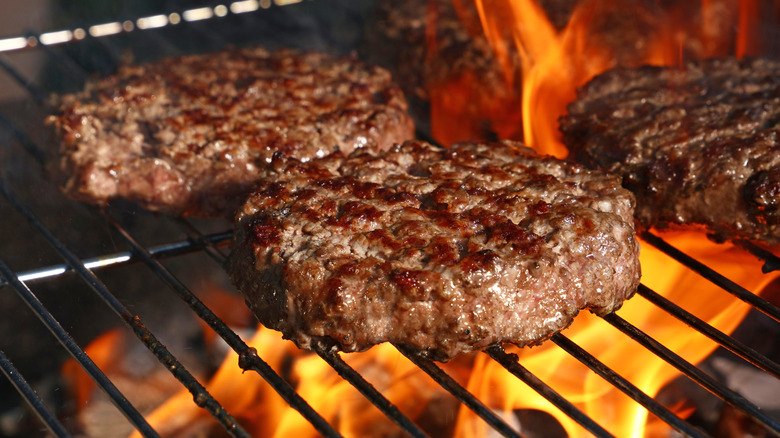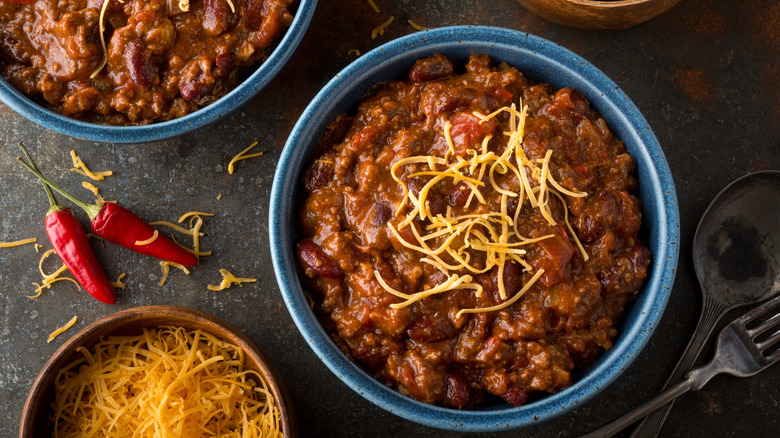The Exact Difference Between Ground Chuck And Ground Beef
Cheap, versatile and full of flavor, it's little wonder that ground beef forms the basis for so many great recipes. But if you find yourself hovering over the meat section in the supermarket, trying to work out if what your dish actually needs is ground chuck, you won't be the only one.
What makes the comparison of ground chuck vs ground beef so confusing is that both are technically ground beef. Consider ground beef the umbrella term, if you will. Ground chuck is a specific subcategory. Ground chuck is made from only the chuck steak, whereas ground beef can be made from a number of different cuts of meat, and more than likely is made up of a combination.
Depending on the exact content of the ground beef, you'll usually find that it differs with ground chuck in fat content, flavor, texture, and price. And as a result of this, the two products have different strengths when it comes to choosing one or the other for your recipe.
What is ground chuck?
Ground chuck is very easy to define. It uses only the chuck cut of the cow, which is the area around the shoulder and neck. The chuck is considered one of the primal cuts of a cow, which determine the way that a butcher breaks down a carcass, rather than the portion cuts, which are the pieces that will end up on your plate.
The shoulder of the cow is a hardworking muscle, resulting in a tough piece of meat with a lot of connective tissue, fat and collagen. The fat and collagen make chuck very flavorful, but the connective tissue needs a low and slow braise –- which is why chuck roast is often turned into a pot roast.
The other main use for this part of the cow is ground chuck, and it's one of the most common types of meat for grinding. By putting chuck steak through the grinder, you're breaking down all those tough connective tissues and removing the need for a slow cooking process, but maintaining that great beefy flavor.
What is ground beef?
Unlike ground chuck, ground beef has something of a looser definition. It's certainly all beef, so don't let that concern you, but you won't always know exactly which cut of meat has been included. Ground beef is most often made from trimmings and cuts from the sirloin, round, brisket, or shank.
Ground beef can be made from any of these cuts, and is more often than not a mix of two or more. It is possible to get ground meat that is solely sirloin or round, but this would usually be labeled as such. The label of "ground beef" allows producers to include any cut of meat in the mix — but doesn't allow the inclusion of water, binding agents, fillers or phosphates (USDA). Technically, ground beef could be any part of the cow, but wouldn't make sense to grind the more expensive, tender cuts of steak such as filet mignon.
Ground beef can be lower in fat, but check the label
Given that ground chuck always comes from the same part of the cow, it has a fairly consistent ratio of fat to lean meat. It will vary somewhat depending on the animal, but it's usually 20% fat, making it one of the fattier ground meats.
The fat content of ground beef depends entirely on the combination of source cuts that have gone into the mix. For reference, sirloin has around 10% fat, while round has 15% fat. Not all ground beef will display the fat content, but by law, it may not contain more than 30% fat (USDA).
The terms lean and extra-lean do have standards when used on beef products. Lean beef must contain a maximum of 10 grams of fat and 4.5 grams of saturated fat per 100 grams of beef, while extra-lean demands a maximum of 5 grams of fat and 2 grams of saturated fat per 100 grams (FSIS).
Choose ground chuck for burgers, ground beef for saucy dishes
The main thing that will probably impact your choice of ground chuck vs ground beef is what you plan to use it for. Sure, in most recipes you can confidently substitute one for the other without ruining the dish, but each has properties that make them more suitable for certain methods of preparation.
The higher fat content of ground chuck is a plus when you want to form the meat into a particular shape. So, think hamburgers, meatballs, or meatloaf. The fat will help maintain the form, as well as preventing your perfectly shaped patties from drying out as they cook.
There are times, however, when you don't want your meat to stick together, and this is when ground beef is the better choice. The crumblier texture makes it ideal for saucy beef recipes like rich chilis, taco fillings, and a sloppy joe that will really live up to its name. If you're opting for a leaner ground beef, you also have less fat released during the cooking process, so dishes like stuffed peppers aren't swimming in oil.
Ground beef tends to be cheaper
Compared to steak or other portion cuts, ground meat is a much more budget-friendly option, which is why dishes like chili and meatloaf have become such family dinner staples. But between ground chuck and ground beef, it's the ground beef that's usually cheaper.
This is because ground beef is made from cheaper cuts of meat, as well as trimmings that would otherwise go to waste. Trimmings are the smaller pieces of meat that are left over when cutting up portions such as steak or roasts. These trimmings might include less desirable meat, but in theory they can include offcuts of more expensive steaks too.
This isn't always the case, however. Producers can sometimes charge more for beef labeled lean or extra-lean, as it guarantees a maximum fat percentage. Fat provides flavor, but if you're looking to cut calories or just want more lean meat for your money, then you might expect to pay a little more.





